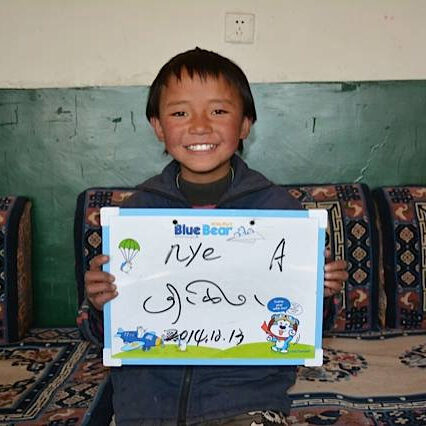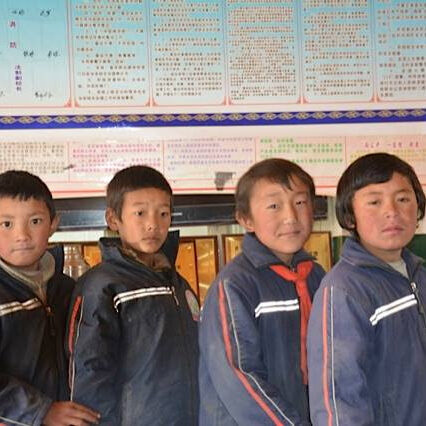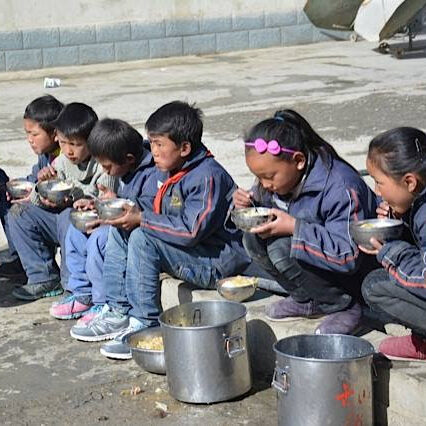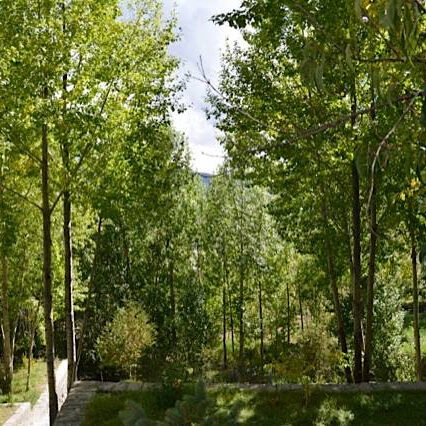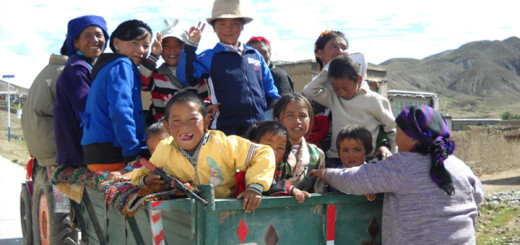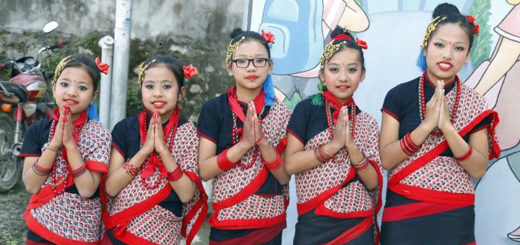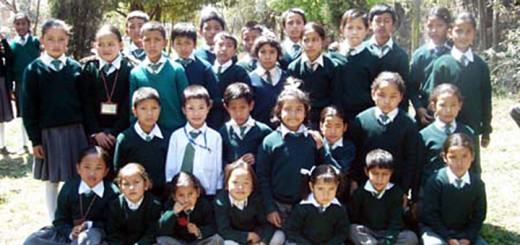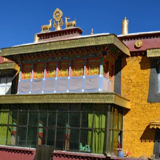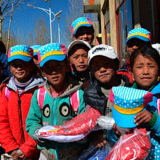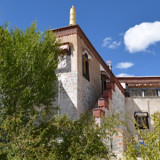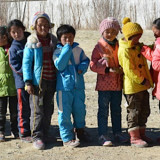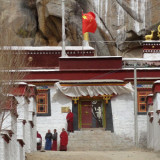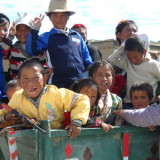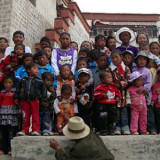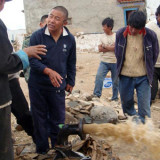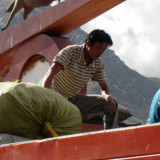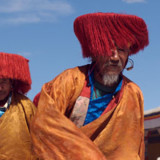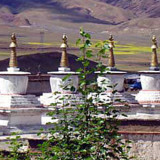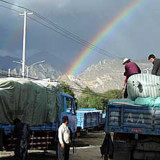Tibet 2014
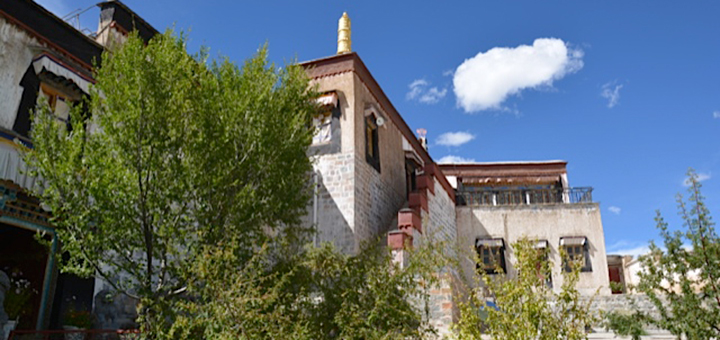
Adoption Project
Again this year aid from the Association has reached more than 20 villages in the district of Dakshu Shang, in central Tibet, where approximately 4,500 people live.
In this area life is very hard, the general conditions made even worse by the harsh weather: it is a high altitude desert, arid, rocky and icy cold during the winter months. The poor harvests, which are limited to the valley floor, and some livestock for the fortunate families, are the only resources available to the people living there.
The aid distributed by the Association has benefits for both the children and their families. Each household (even those composed for example of an elderly person living alone) has received, based on the number of family members in the registers of the Local Government, a stock of rice and barley flour to supplement the particularly poor harvest this year caused by the lack of rain.
For all the children – adopted or not – every family has received along with money: shoes, jackets, sweaters, thick trousers, woollen leggings and so on. The aid is always divided equally between the children of all the families in such a way as not to create added suffering for those inhabitants of these small villages who do not yet have a sponsor.
All the adopted children were identified and photographed one by one: for them this is always a moment of great joy – to hear their name called out is proof of the important and constant presence of affection from so far away.
All the children not yet adopted were also photographed, bringing a smile to their faces and giving them hope for a future meeting with a “Jindala”, the Tibetan word for “benefactor”.
Children Waiting for Adoption
The children not yet adopted wait patiently in line to be photographed one by one; the teachers of the school help us by writing their names and information on the board.
The children are so happy to feel included and to know that they still have hope for a better future. They all want so much to have a “Jindala”, which is the Tibetan word for benefactor.
Schools in Tibet
The distribution of materials for the new academic year took place in the village school of Nye. School supplies for a full year were given to all 700 children who attend the various schools in the district, they received: notebooks, pencils, coloured pencils, pens, ink, backpacks, hats, new uniforms and so on.
The elementary school in Nye, which has classes from the first to sixth grade, is home to about 500 children who come from the surrounding villages and is the largest school in the district. There are two other smaller schools in the area that only teach from the first to the third grade.
Many children have to board in Nye School, since their villages are too far away to travel daily. They are housed in rooms with eight beds and receive three meals a day. The refectory was expanded to accommodate the increasing number of children, and the kitchen has been renovated to make it more functional and hygienic. The kitchen has also been stocked with new pots, dishes and utensils.
Classes run daily from morning until mid-afternoon; the children have a short holiday in the summer and a longer winter break which falls on the occasion of the Tibetan New Year which celebrates the start of the lunar year. This date varies each year between February and March and the holiday lasts about a month – it is the coldest time of year.
After the sixth grade, the children can continue their education in middle and high school in the even more distant village of Sakya, which offers from grades seven to twelve. In recent years some of the first children adopted, since 1998, have also been able to study in university.
The number of children attending school has grown tremendously thanks to the help the families receive. From a situation of almost total illiteracy a new generation is evolving of educated and skilled youngsters who will certainly be able to do a lot for their families and communities.
click on the images to see the galleries
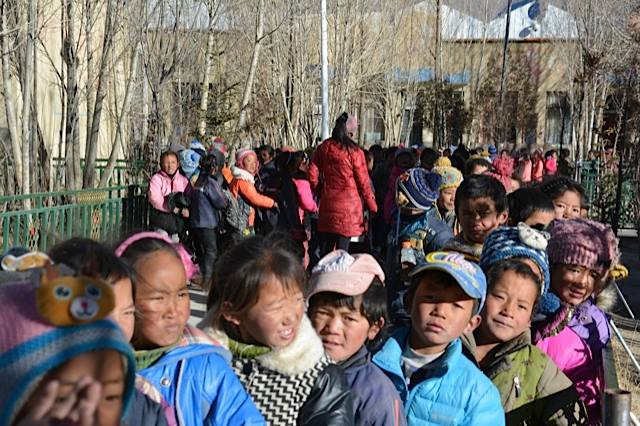
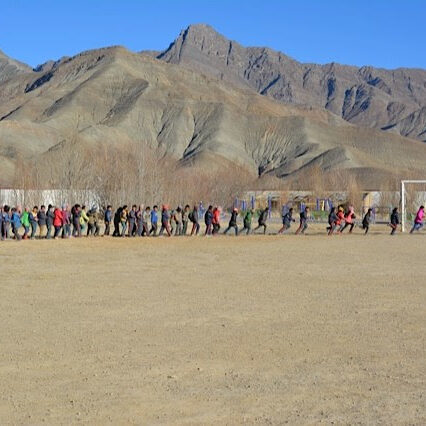
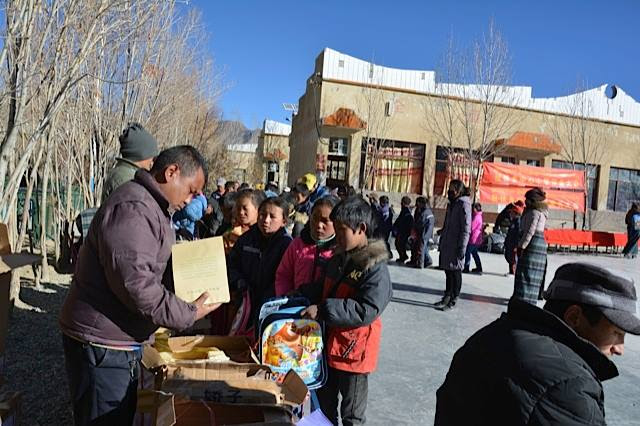
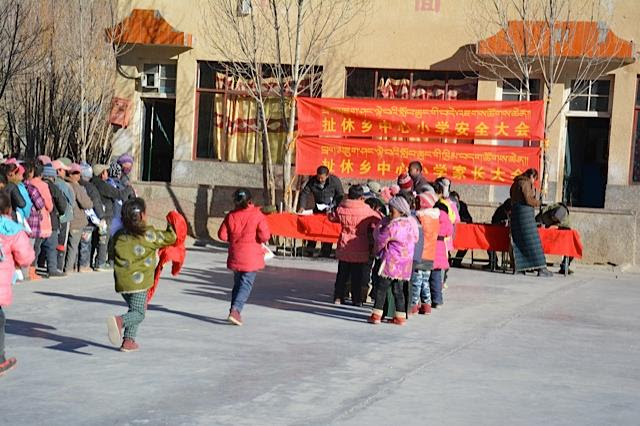
School Meals
Although the refectory was recently expanded, the places to sit are still not enough for all the children; many of them, if the weather is mild, prefer to eat outside rather than wait for the second sitting.
The pots are filled with rice, vegetables, barley, pasta, meat or whatever is on the menu that day and the children, after washing their hands in the new sinks, can serve themselves. It is a moment in the day, away from the eyes of teachers waiting to start the afternoon classes, when the children are free to enjoy each others company and have fun. After eating, each one of them has the task of cleaning their own bowl and returning it to the dining hall. The children also take it in turns to sweep and clean the floor.
Environment Projects
Central Tibet is a high altitude desert, situated at about 4,000 metres. Here it rains very little and trees are rare due to the altitude and the dryness of the climate. Completely missing is the valuable protection that trees can offer against the extreme climatic factors of Tibet: the strong winds, the blinding sand storms, the scorching summer sun, the infrequent rain that can sometimes be extremely violent, causing landslides resulting in the loss of homes and devastation of whole areas of cultivated land.
This land, already depleted and dry, is extremely vulnerable to further erosion which makes it even less suitable for agriculture. Wood is therefore a rare commodity, and the only fuel for cooking and heating is yak dung mixed with twigs and weeds and then dried. Considering the difficulties of cultivating vegetables, especially due to the lack of water, the diet in the villages of this area is also extremely deficient in vitamins.
Nearby the villages of Gangchen, Dhonnang, Nye and Namling thousands of trees have already been planted. These photographs were taken in September 2014. These trees are growing strong thanks to the patient work of irrigation with water from the aqueduct made in Gangchen and Singma. This aqueduct uses water pumped from a source located 60 metres below ground, which is then stored in agricultural water tanks located in the villages. In this way even areas, that were until recently dry and uncultivated, have produced small crops of barley, which is then ground into a flour called tsampa, the staple food for the Tibetans in this area.
It is possible to donate a tree to the villages in Tibet. You can also give to the Association a dedication which will be read out during special ceremonies held in the Tibetan Monasteries, it can be for: a particular goal or aim, a person who is sick or has passed away, a family member or a friend in need, on the occasion of a wedding or a birth…

